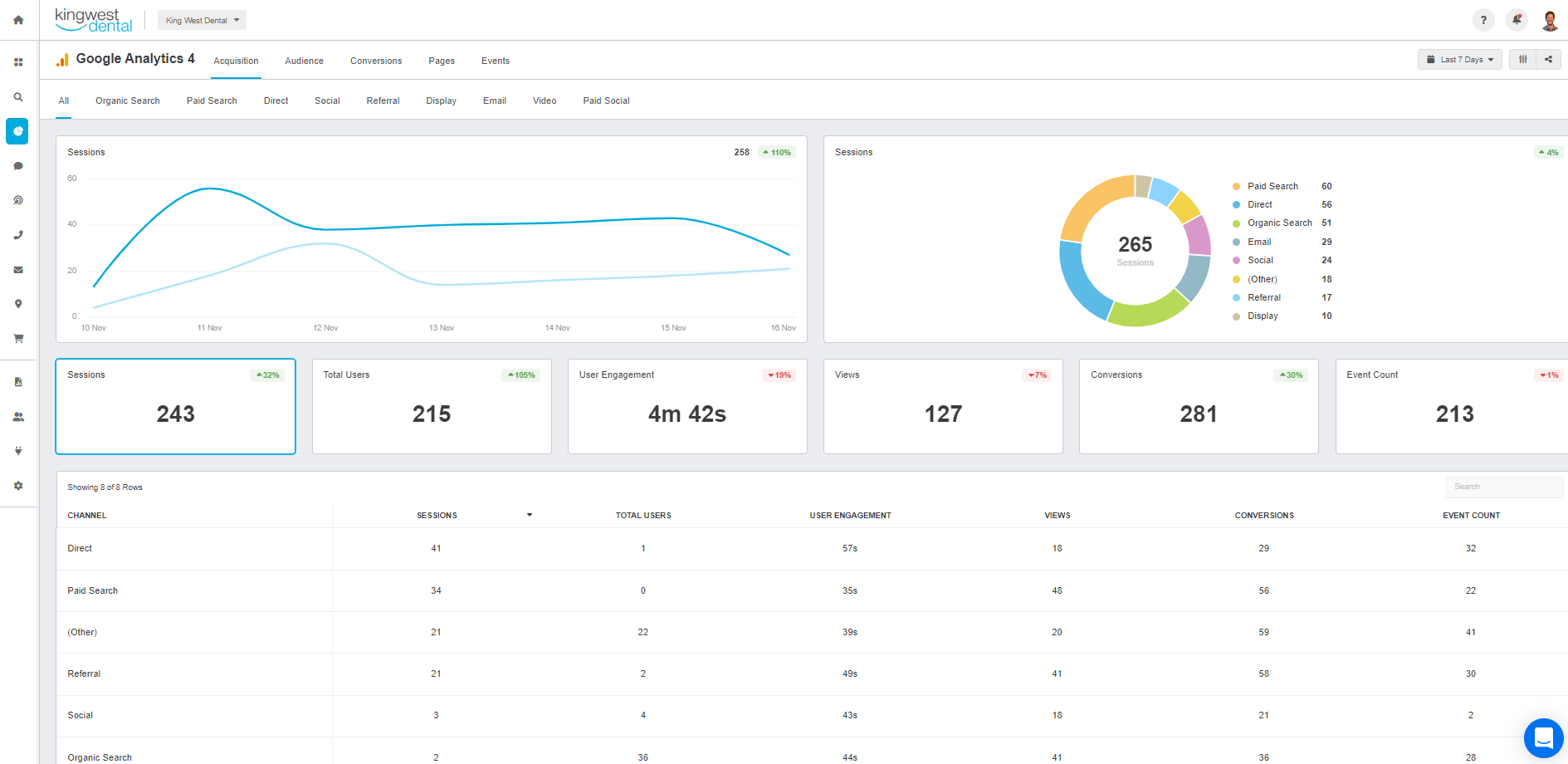How to Use Secondary Dimension in Google Analytics for Deeper Insights
How to Use Secondary Dimension in Google Analytics for Deeper Insights
Blog Article
Enhance Your Data Analysis Utilizing Second Dimension in Google Analytics
Discovering the capabilities of additional dimensions in Google Analytics opens up a world of possibilities for refining data evaluation. By layering additional measurements onto primary information collections, a more elaborate story arises, shedding light on user interactions and efficiency signs.
Comprehending Secondary Measurements
Additional measurements in Google Analytics refer to additional criteria that can be added to the primary measurement, permitting for a more in-depth analysis of data (Secondary Dimension in Google Analytics). By incorporating second measurements, analysts can sector and filter information to reveal patterns, patterns, and correlations that might not be obvious when looking at the information as a whole.

Benefits of Making Use Of Second Dimensions
When examining data in Google Analytics, the use of second measurements offers invaluable insights right into individual habits and efficiency metrics. By adding a secondary measurement to your primary data, you can dive deeper into the characteristics of your site site visitors and their communications. One of the vital benefits of making use of secondary measurements is the capability to segment and compare data extra successfully. This division permits you to recognize exactly how different variables, such as demographics or website traffic resources, impact customer actions and conversions (Secondary Dimension in Google Analytics).
In addition, second measurements help in determining patterns and correlations that may not be promptly obvious when looking at the information in isolation. This much deeper level of analysis can reveal important information that can direct advertising strategies, internet site optimization, and general service choices. In addition, additional measurements boost the context of your main information, offering an extra comprehensive sight of user involvement and efficiency metrics. Generally, the use of secondary measurements in Google Analytics can significantly enhance the depth and top quality of your information analysis, causing even more informed decision-making and enhanced results.
How to Add Second Dimensions
By integrating additional measurements in Google Analytics, customers can acquire much deeper understandings right into their data evaluation process, permitting for even more thorough evaluation of user behavior and performance metrics. Adding second dimensions is a simple process that can substantially boost the deepness of evaluation. Once in the report, find the "Second measurement" tab over the data table.
Analyzing Information With Second Measurements
Utilizing second measurements in information analysis provides an extra webpage comprehensive understanding of user habits and performance metrics. By adding a secondary dimension to your primary information established in Google Analytics, you can dive deeper into the features of your web site visitors and their communications. Integrating the main dimension of 'source/medium' with the additional measurement of 'landing web page' can reveal which specific pages are drawing in website traffic from different sources, helping you optimize these web pages for better interaction.

Fundamentally, assessing information with additional dimensions equips you to acquire useful understandings into customer habits, identify patterns, and make educated choices to enhance the performance of your digital properties.
Best Practices for Second Dimensions
In information analysis, including second measurements efficiently can considerably boost the depth of understandings stemmed from metrics and user habits patterns. When using secondary dimensions in Google Analytics or any various other analytical device, it is critical to stick to best methods to make certain the precision and relevance of the data evaluation.
One key finest practice is to very carefully pick additional measurements that complement the main measurement being examined. Choosing secondary dimensions that offer added context or further division can supply a more detailed understanding of the data. It is additionally vital to stay clear of overcomplicating the evaluation by including way too many additional measurements, which may result in confusion or dilution of understandings.
Moreover, it is recommended to trying out different combinations of key and second measurements to uncover brand-new correlations and trends. Frequently refining the choice and reviewing of secondary measurements based on the certain objectives of the evaluation can cause more actionable insights. By complying with these best techniques, information experts can utilize second measurements properly to boost the general data evaluation process and decision-making abilities.

Conclusion
Finally, including additional measurements in Google Analytics is crucial for a detailed data analysis approach. By leveraging additional dimensions alongside key ones, analysts and online marketers can uncover useful understandings and connections that can notify decision-making and optimize electronic marketing approaches. Comprehending just how to successfully make use of this contact form secondary measurements and complying with ideal practices will allow professionals to extract meaningful data and boost their overall performance metrics.
Secondary dimensions in Google Analytics refer to additional parameters that can be included to the primary dimension, permitting for a much more thorough analysis of information. By incorporating additional dimensions, analysts can section and filter information to reveal patterns, fads, and correlations that might not be noticeable when looking at the information as a whole. Combining the primary measurement of 'source/medium' with the secondary measurement of 'touchdown web page' can expose which details pages are bring in website traffic from different resources, aiding you maximize these pages for far better involvement.
One trick best practice is to thoroughly choose second dimensions that complement the primary dimension being assessed. By following these finest methods, data experts can leverage additional dimensions properly to improve the total data analysis process and decision-making capabilities.
Report this page